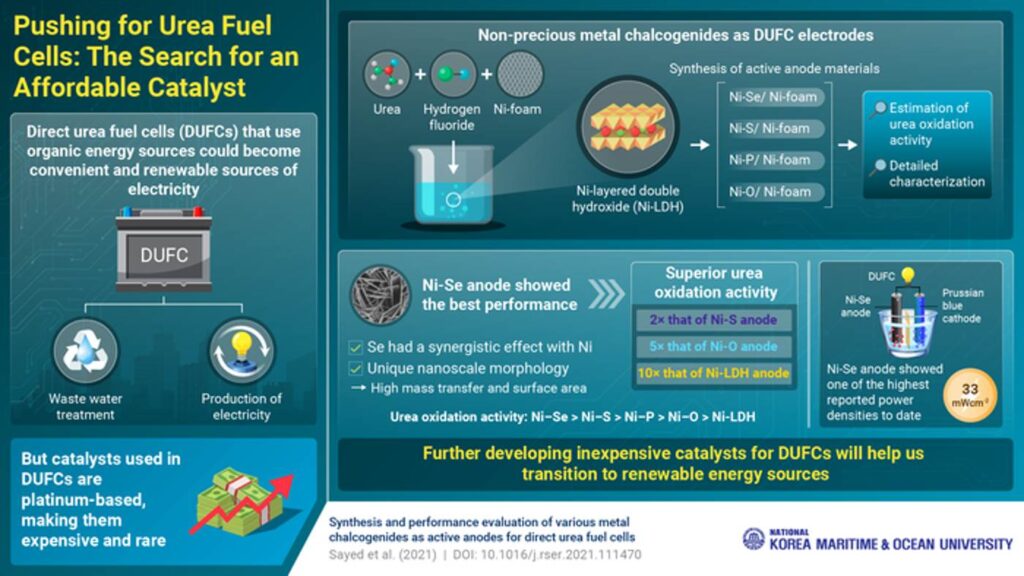South Korean scientists are leading a revolution in pee-powered fuel cells that generate “clean” energy and purify wastewater.
A common organic molecule in fertilizer and a principle component of human urine, scientists achieved state-of-the-art performance using urea fuel cells—built with inexpensive electrodes and without precious metals.
Direct urea fuel cells (DUFC) could turn any wastewater treatment plant into a renewable power station thanks to the development from the Korea Maritime and Ocean University.
These flexible energy generators offer novel and unique ways to equip a house, a town, or a parish with renewable electricity that cuts down on the footprint and upkeep of other infrastructures.
Utilizing a nickel and selenium anode and nickel microfoam, Professor Kyu-Jung Chae found inexpensive metal components to act as the catalyst in the DUFC, facilitating critical chemical reactions that allow it to work, which up until now had been made only with precious metals like platinum.
Several nickel-based catalysts were tested and selenium was found to have a synergistic effect. Furthermore, when paired together with a cathode made from Prussian Blue, they outperformed precious metals, creating the highest power densities ever found in a DUFC with nickel.

Because urea fuel cells generate electricity while also helping in the treatment of urea-ridden wastewater, providing clean water in the process, they are a versatile option in remote places without access to a stable power grid, such as in rural areas, ships, or even aboard spacecraft.
Across the ocean border, a Japanese university is opting to try and turn “number 2” into the number 1 power source for its buildings.
The invention of a toilet that composts human excrement and turns it into methane biogas for use in the school’s energy system has the students there re-evaluating waste like never before, GNN reported, as the amount of waste they contribute to the electric bills is returned to them in the form of a digital currency.
MORE: This Carbon-Negative Perfume is Made from Captured CO2 – And it Smells Like Figs and Orange Peel
On average, a human’s daily excrement can generate around 0.5 kilowatt hours of electricity. Bacteria breaks down the feces of student and faculty alike, and biomethane produced as a byproduct is channeled into a solid-oxide fuel cell which powers several building functions such as the hot water heater.
SHARE the Latest Research With Others in Search of Great News…




















